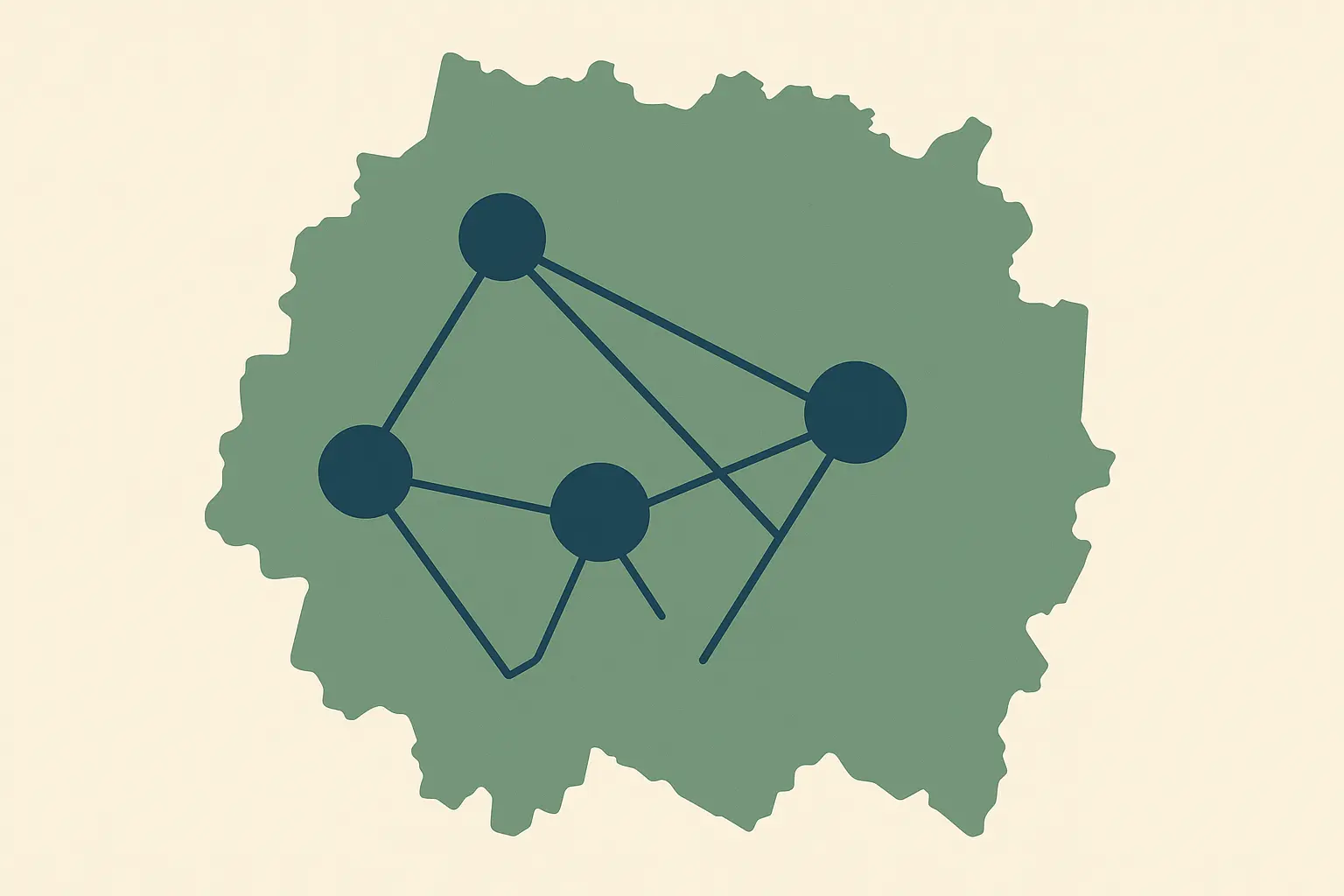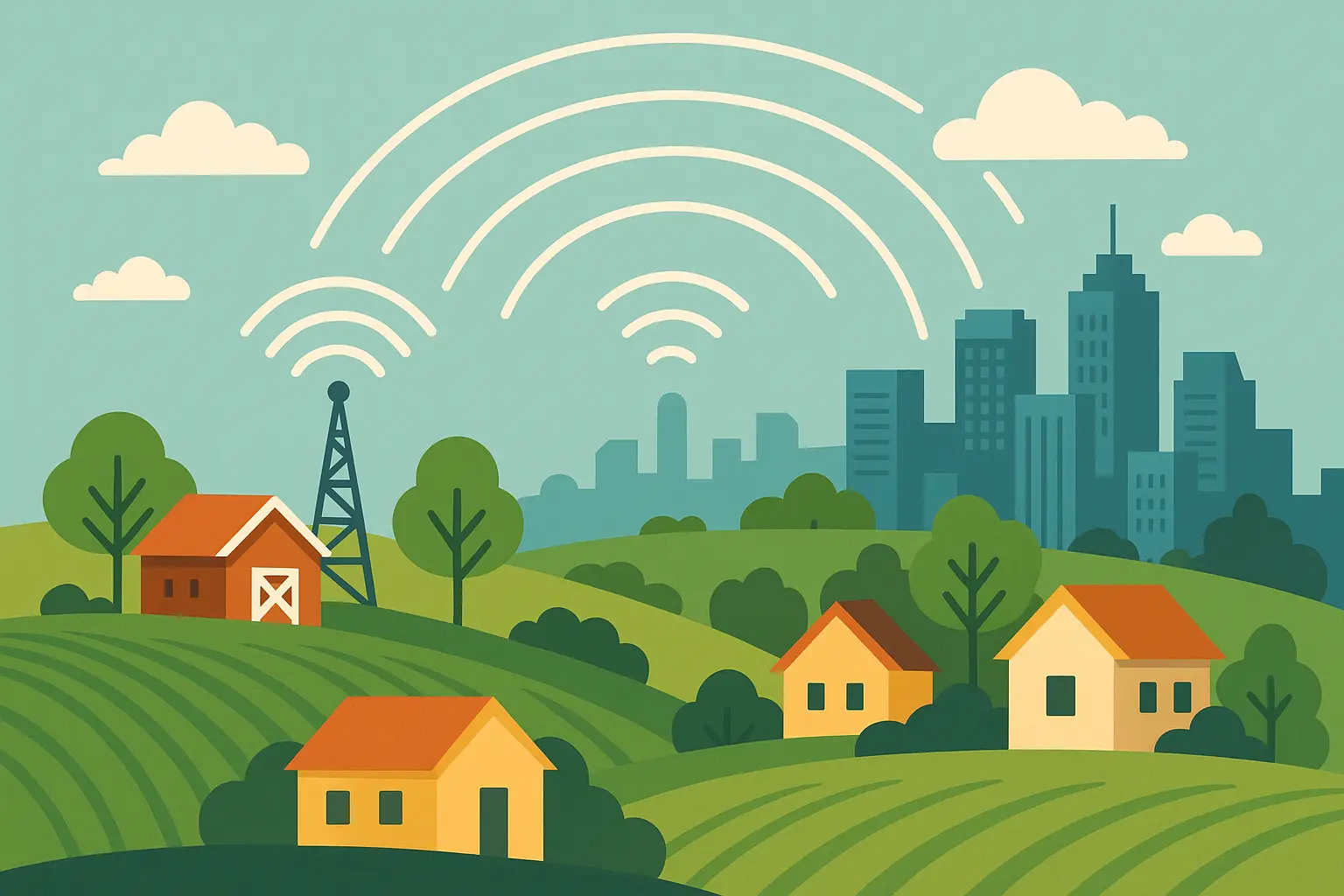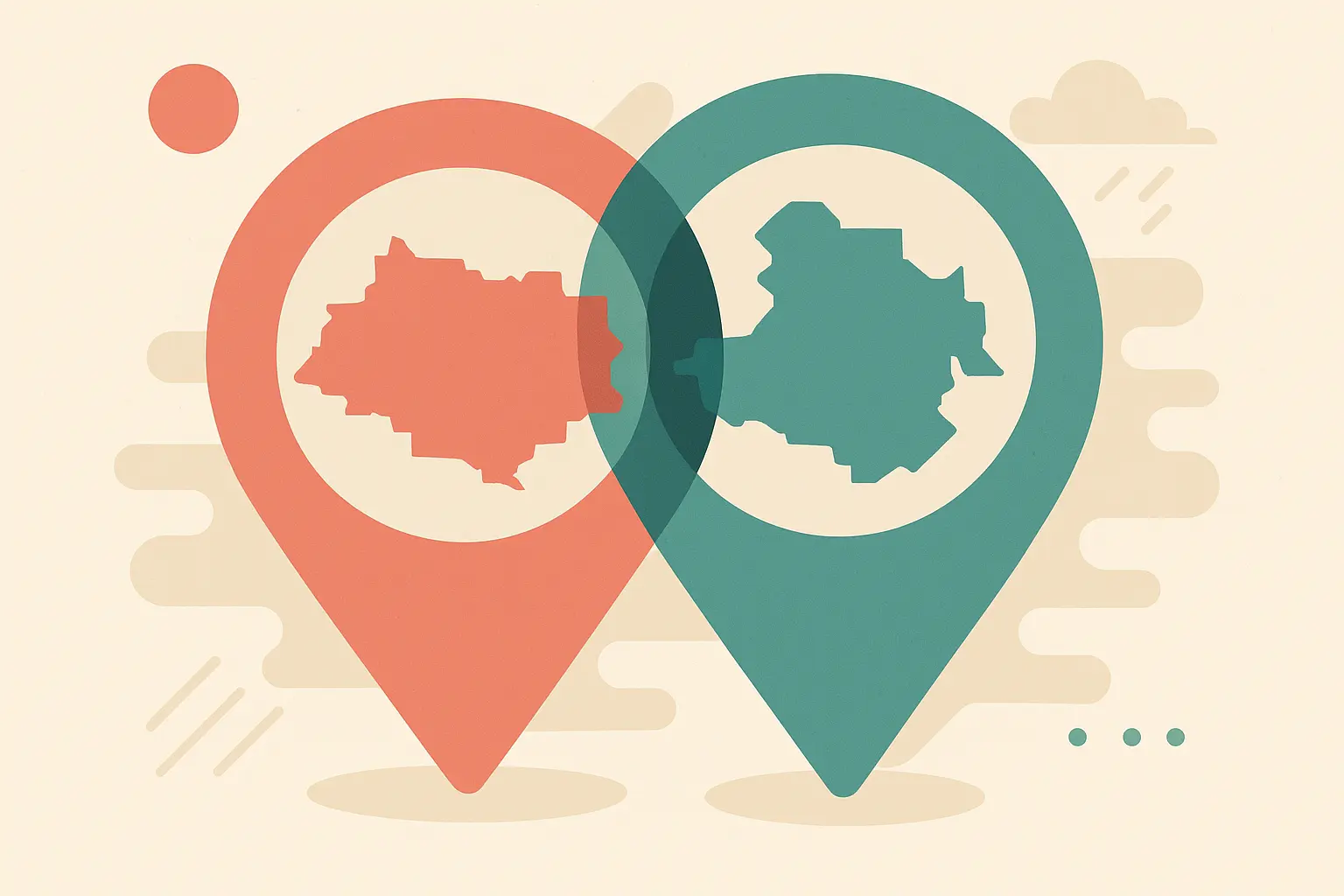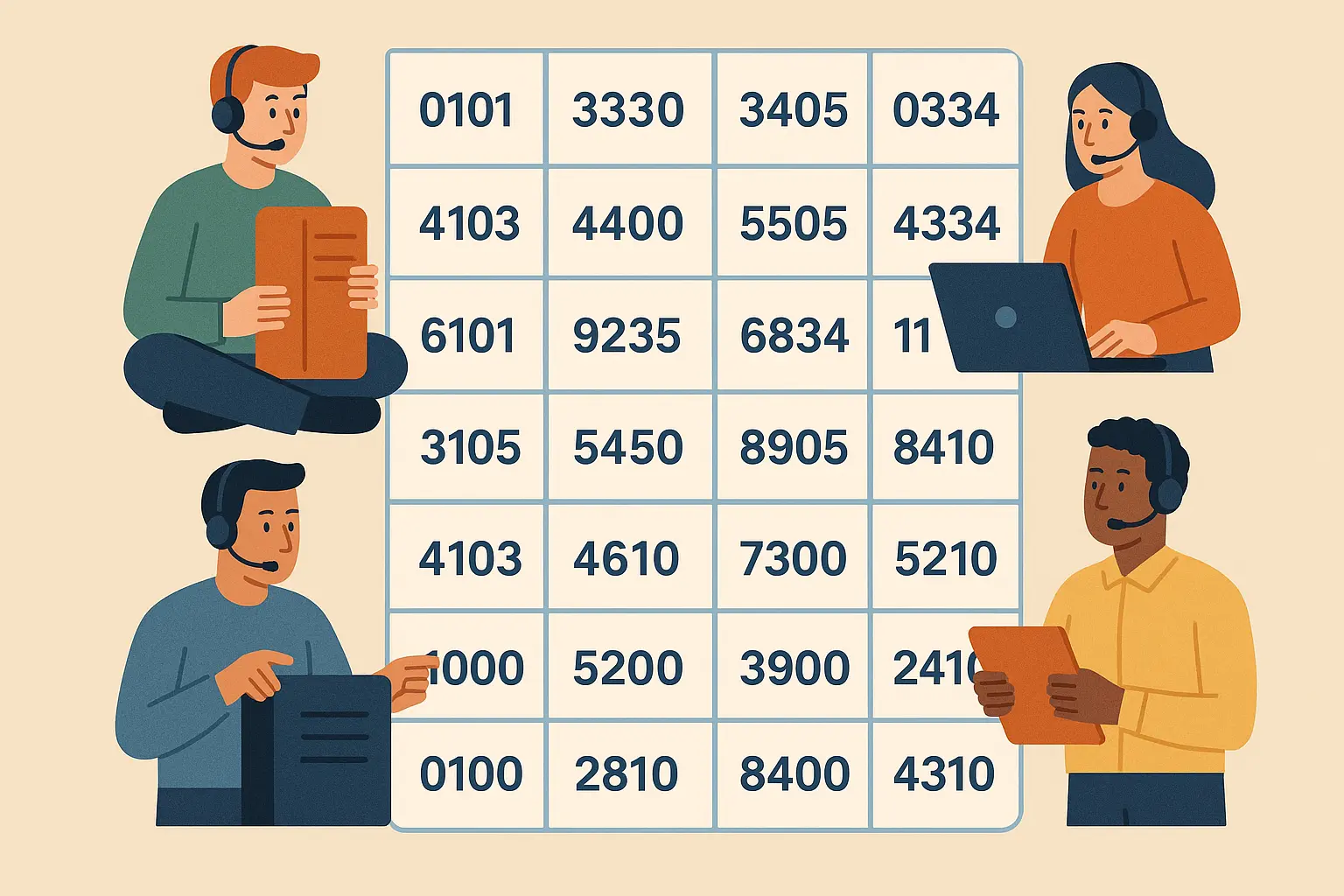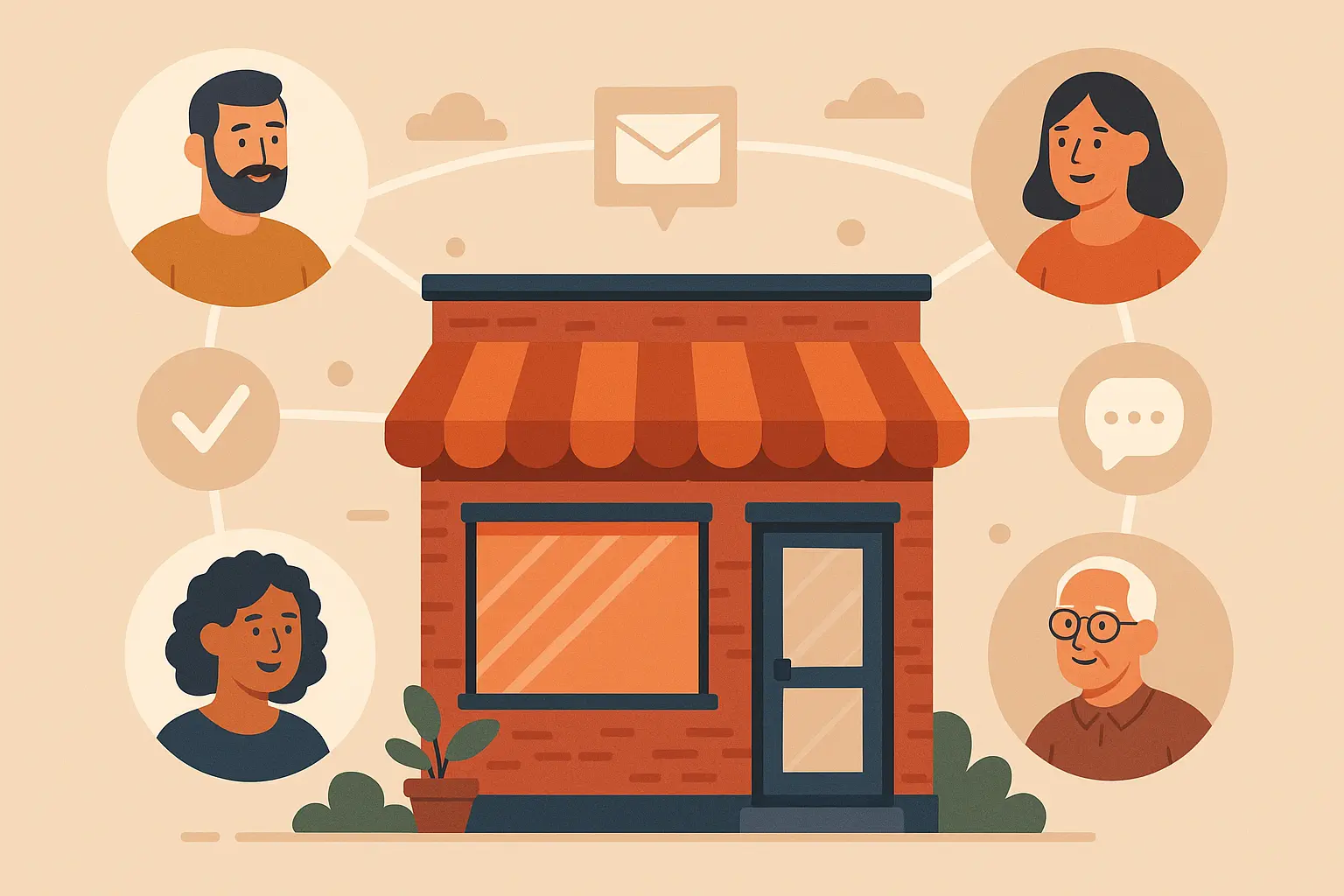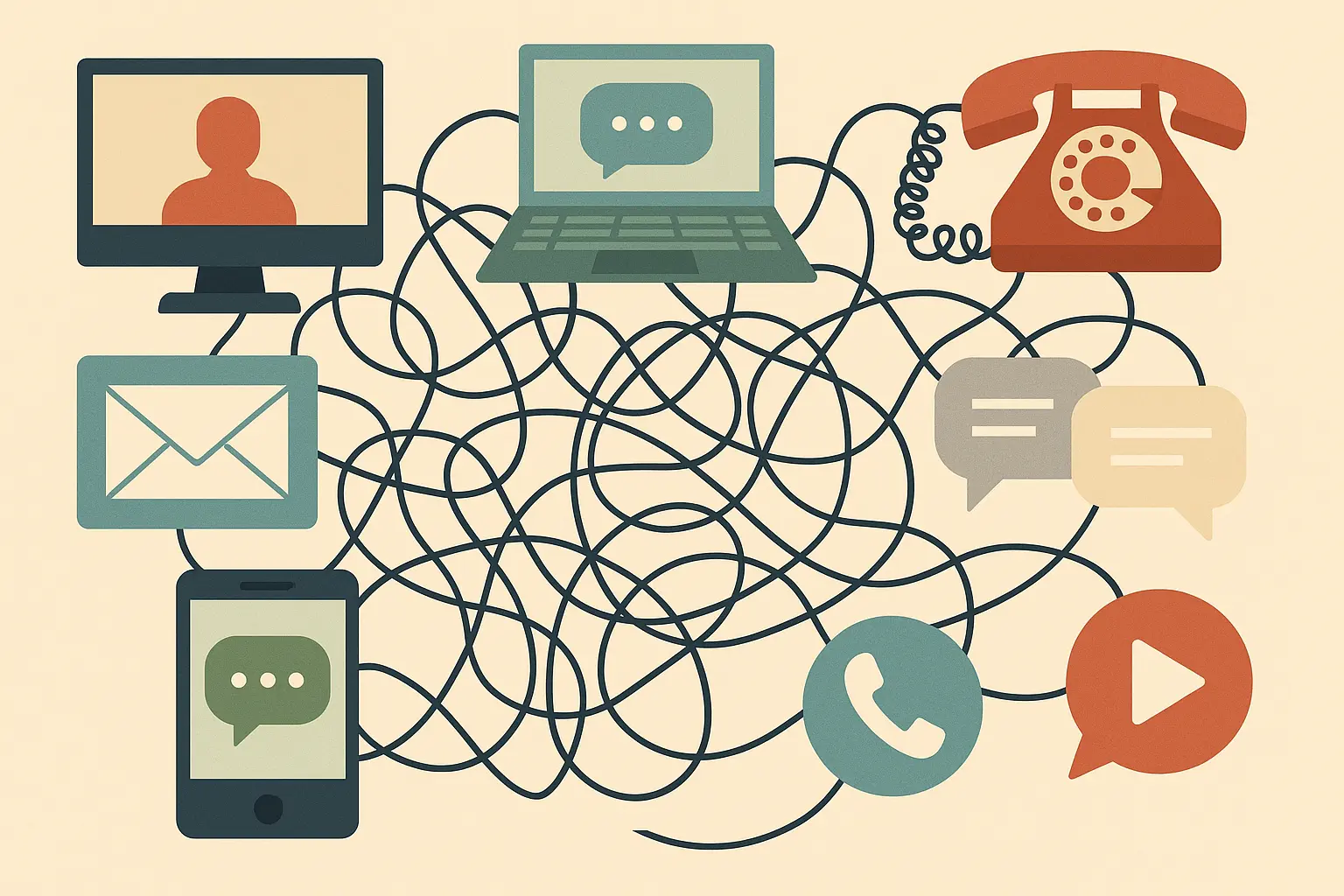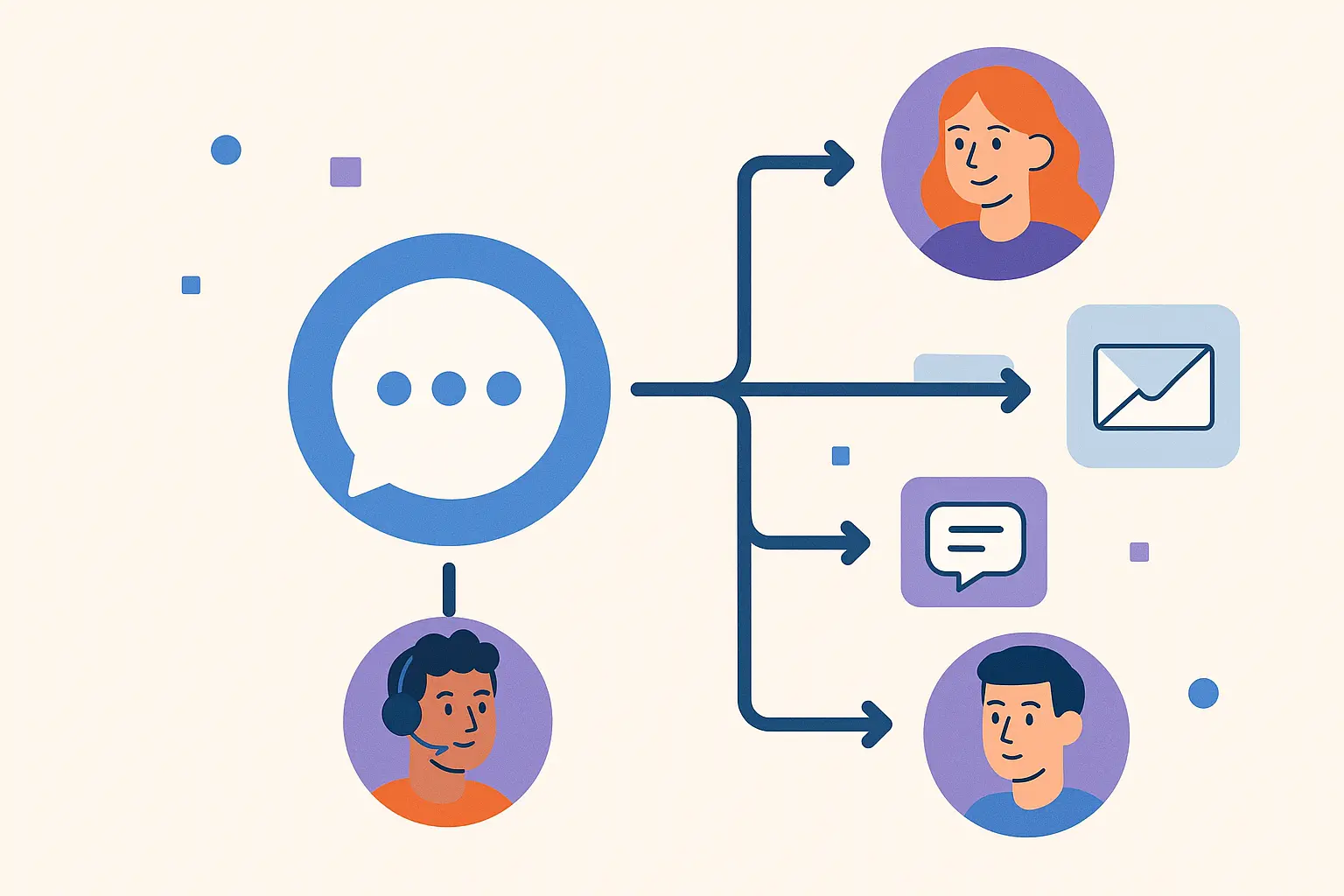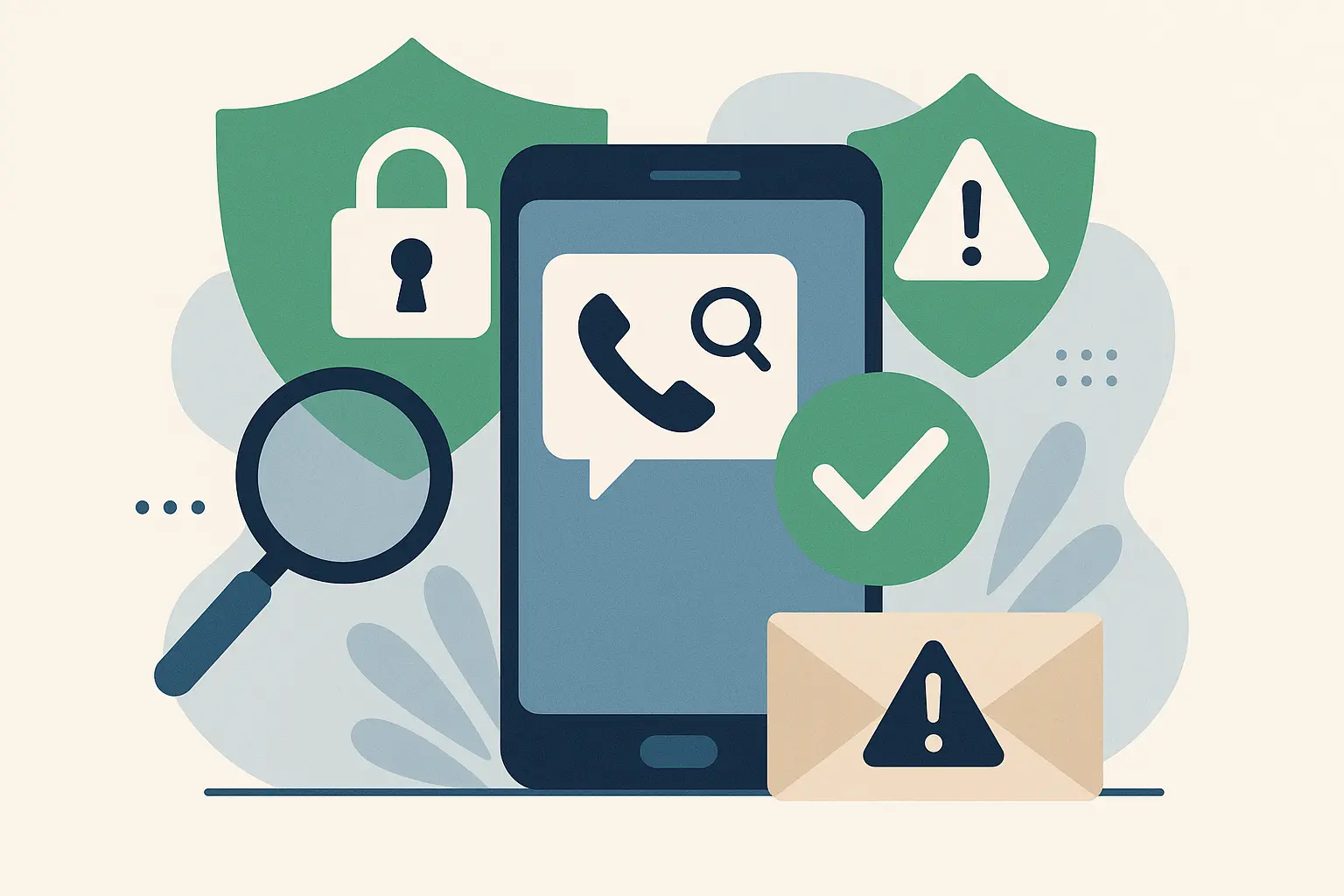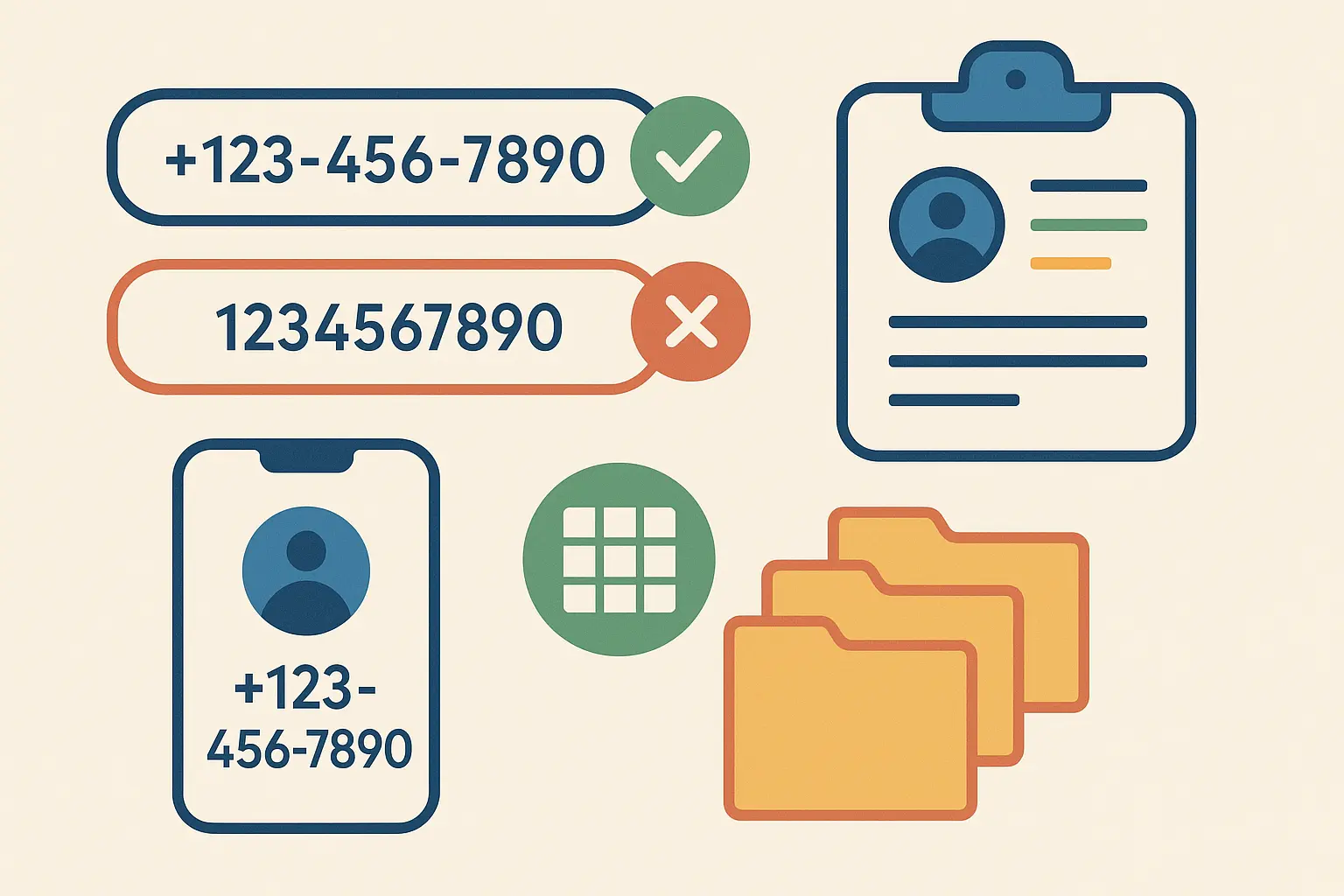The 919 area code has become synonymous with North Carolina’s thriving Research Triangle region, where technology companies, universities, and healthcare organizations have created one of the most dynamic business environments in the Southeast. According to the North American Numbering Plan Administrator (NANPA), this numbering system continues to evolve quarterly to meet growing demand in this rapidly expanding region.
Table of Contents
Table of Contents
-
Where 919 Actually Covers (It’s Bigger Than You Think)
-
The 984 Reality (And Why You Need 10 Digits Now)
-
Getting Your Numbers Assigned (And Why It Matters)
-
Why Your Area Code Still Matters for Business
-
The Communication Challenges Nobody Talks About
-
Smart Solutions for Message Management
-
Finding and Verifying 919 Numbers
TL;DR
-
The 919 area code covers North Carolina’s Research Triangle, including Raleigh, Durham, and Chapel Hill, with 984 as an overlay requiring 10-digit dialing
-
Local area codes still matter for business credibility – customers trust familiar numbers more than distant or toll-free alternatives
-
Number portability lets you keep your 919/984 number when switching carriers, but geographic restrictions still apply
-
Managing communications across multiple locations creates real challenges for businesses, especially with SMS routing
-
Modern forwarding solutions can automatically route text messages to email or team platforms, solving distribution problems
-
Verification tools help identify legitimate 919/984 numbers and protect against spoofing scams
Where 919 Actually Covers (It’s Bigger Than You Think)
Most people think 919 means Raleigh. While the state capital is definitely the center, the area code actually blankets the entire Research Triangle region – and then some.
The cultural significance of the 919 area code has grown so strong that the region now celebrates “919 Day” with free concerts and community festivals every September 19th, bringing together residents from across Raleigh, Durham, Cary, and Chapel Hill to showcase local talent and strengthen community connections.
The Research Triangle’s Real Footprint
You’re looking at Raleigh, Durham, Chapel Hill, and Cary as the major players, but it doesn’t stop there. Wake Forest, Garner, Apex, Morrisville, and parts of nine different counties all fall under 919. That’s hundreds of thousands of people across a pretty massive area.
|
Major 919 Cities |
Primary Industries |
Key Institutions |
|---|---|---|
|
Raleigh |
Government, Technology, Healthcare |
NC State University, State Government |
|
Durham |
Medical Research, Biotechnology |
Duke University, Research Triangle Park |
|
Chapel Hill |
Education, Healthcare |
University of North Carolina |
|
Cary |
Technology, Corporate Headquarters |
SAS Institute, MetLife |
This matters if you’re running a business. Your “local” market is actually huge, stretching from university towns to suburban communities to rural areas that are growing fast along major highways.
According to “HighSchoolOT’s regional sports coverage”, the 919 area code region officially includes Chatham, Durham, Franklin, Granville, Johnston, Lee, Orange, Wake, and Wayne counties, demonstrating the extensive geographic reach beyond the main urban centers.
NC State, Duke, and UNC Chapel Hill all operate within 919 territory. That’s hundreds of thousands of students, faculty, and staff who expect local communication options. If you’re running a business that serves these communities, having a 919 phone number isn’t just nice – it’s practically essential.
A local pizza delivery company discovered that switching from a toll-free number to a 919 number increased their order volume by 23% among university students, who were more comfortable calling what appeared to be a local business rather than a potentially distant chain restaurant.
The 984 Reality (And Why You Need 10 Digits Now)
Nobody wanted another area code, but the Research Triangle’s growth made it inevitable. Instead of splitting the region and forcing people to change numbers, regulators layered 984 right on top of 919’s territory.
The practical result? You now need to dial all 10 digits for every call, even local ones. It’s annoying, but it’s the price of success.
Both 919 and 984 numbers work exactly the same way in the same geographic area. The only difference is when they were assigned.
Why We Needed 984 in the First Place
The Research Triangle exploded in population and business growth. More people meant more phone lines, more businesses meant more numbers, and eventually, the math just didn’t work anymore. Rather than force existing 919 customers to change their numbers (imagine that chaos), telecommunications regulators chose the overlay approach.
The implementation wasn’t instant. There was a transition period where people had to adjust to new dialing patterns and businesses had to update their systems. The key point is that 984 provides additional capacity without disrupting existing 919 users – you keep your number, but the dialing rules changed for everyone.
Getting Your Numbers Assigned (And Why It Matters)
Most people never think about how phone numbers actually get distributed, but understanding this process can help you make better decisions about your business communications. The system involves carriers, exchanges, and regulations that determine what numbers are available and how you can use them.
How Carriers Divvy Up the Numbers
Verizon, AT&T, T-Mobile, and smaller regional providers each get assigned specific blocks of numbers within the 919 and 984 area codes. This isn’t random – there’s a structured system that determines which carrier controls which three-digit exchange codes and how they distribute individual numbers to customers.
Those first three digits after the area code aren’t arbitrary. They’re called exchange codes, and they help route calls efficiently while providing some geographic organization. Different exchanges might serve different parts of the Triangle region or different types of services.
|
Carrier Type |
Number Assignment Strategy |
Typical Customer Base |
|---|---|---|
|
Major National Carriers |
Large sequential blocks |
Business and residential |
|
Regional Providers |
Smaller allocated ranges |
Local businesses, rural areas |
|
VoIP Services |
Flexible virtual assignments |
Remote workers, startups |
|
Specialty Services |
Specific exchange codes |
Toll-free, premium services |
Keeping Your Number When You Switch
Number portability is one of those consumer rights that most people don’t fully understand until they need it. You can take your 919 or 984 number with you when you change carriers, but there are rules and limitations that might surprise you.
Federal regulations protect your right to keep your phone number when switching carriers within the same geographic area. For 919/984 numbers, this means you can move between Verizon, AT&T, T-Mobile, or other providers without losing your established number.
Here’s the catch – your number has to stay within its original rate center boundaries. Modern VoIP services have created some flexibility, but traditional geographic restrictions still matter for most business and residential services.
A Durham-based consulting firm successfully ported their established 919 number to a new VoIP system when moving offices, maintaining client relationships and avoiding the cost of updating thousands of business cards and marketing materials.
Why Your Area Code Still Matters for Business
Despite all our digital communication options, people still judge businesses by their phone numbers. A 919 or 984 number tells local customers you’re part of their community, not some distant call center.
Customer Trust and Recognition
Local customers often hesitate before calling toll-free numbers or unfamiliar area codes. They wonder if they’ll reach someone who understands their needs or if they’ll get transferred to a generic customer service center. A 919 or 984 number eliminates that hesitation.
Professional services feel this especially. Law firms, medical practices, and consulting businesses particularly benefit from local numbers. Clients want to feel like their attorney or doctor is part of their community, not operating from some distant corporate headquarters. The area code becomes part of your professional identity.
The Communication Challenges Nobody Talks About
Here’s where things get tricky for modern businesses. You might have a local 919 number, but your team could be spread across multiple locations, working remotely, or managing communications across different devices and platforms.
Text messages arrive on individual phones, creating bottlenecks when key people are unavailable. Important customer inquiries might sit unread while decision-makers are in meetings or using different devices.
Teams often use email for formal communication, Slack for internal chat, and SMS for urgent customer contact. When these systems don’t talk to each other, things fall through the cracks.
When Messages Get Stuck on the Wrong Device
I’ve seen businesses lose opportunities because an important text message sat on someone’s personal phone while they were using their laptop for work. The message was there, but it might as well have been invisible.
Not every text message deserves immediate attention, but determining which ones are urgent requires human judgment. Businesses need systems that can route messages intelligently based on sender, content, or timing.
A Raleigh-based real estate team missed three potential property showings because urgent client texts arrived on their office manager’s phone during a weekend, while the available agents were checking email and Slack but had no visibility into the SMS communications.
Smart Solutions for Message Management
The communication challenges I’ve described aren’t unsolvable – they just require smarter approaches than most businesses currently use. Modern forwarding and integration solutions can automatically route messages where they need to go, ensuring nothing important gets missed while avoiding information overload.
Automated Message Distribution That Actually Works
Advanced SMS forwarding services can automatically route incoming text messages to email addresses or team collaboration platforms. This ensures critical communications reach the right people regardless of device limitations or physical location.
When SMS messages get forwarded to email, they become part of your existing workflow. You can search them, file them, and respond from whatever device you’re using. The message history stays organized and accessible.
Forwarding SMS messages to Slack, Microsoft Teams, or similar platforms creates seamless communication workflows. Your distributed team can see and respond to customer messages without everyone needing access to the original phone.
The best forwarding solutions let you create specific rules for different types of messages. Messages from key clients can go directly to management, while general inquiries get routed to customer service. Keywords can trigger special handling for urgent situations.
When managing communications across multiple Triangle locations, many businesses discover they need to forward text messages to email addresses to ensure important customer inquiries reach the right team members regardless of their physical location.
Teams often struggle with fragmented communication until they learn how to forward text messages to Slack channels, creating unified workflows that keep everyone informed regardless of their preferred communication platform.
For businesses new to automated SMS management, getting started with Auto Forward SMS provides the foundation for creating reliable message routing systems that ensure critical communications reach the right team members.
Finding and Verifying 919 Numbers
With phone scams and number spoofing becoming more sophisticated, knowing how to verify and locate information about 919 and 984 numbers has become essential. Whether you’re trying to confirm a legitimate business contact or identify potential fraud, understanding these tools and techniques can save you time and protect you from scams.
When dealing with suspicious calls, understanding how to properly manage text forwarding on Android devices helps businesses maintain secure communication channels while protecting against potential fraud attempts.
Mapping Tools and Boundary Identification
Online mapping tools can show you exactly where 919 and 984 area codes provide service, including detailed boundary definitions. This is particularly useful for businesses operating near area code borders or trying to determine local calling areas.
Modern mapping services show precise geographic boundaries, helping you determine if a specific location falls within 919/984 coverage areas. They also identify neighboring area codes like 910, 252, or 336, which can be useful for understanding regional calling patterns.
Areas where 919/984 territory meets adjacent area codes can create confusion for residents and businesses. A location might be geographically close but fall under a different area code, affecting local calling rates and customer perceptions.
Staying Safe from Number Spoofing
Scammers frequently spoof 919 and 984 numbers to make their calls appear local and trustworthy. Learning to identify legitimate numbers and recognize spoofing patterns helps protect both individuals and businesses from phone-based fraud.
Tools that reveal which telecommunications provider owns a specific number block can help verify legitimate business communications. If a number claiming to be from a local bank actually belongs to a different carrier than the bank typically uses, that’s a red flag.
If you get a suspicious call from a local number, don’t assume it’s legitimate just because of the area code. Trust your instincts, and don’t give out personal information unless you’re certain who you’re talking to.
Business systems, databases, and marketing materials need to format 919 and 984 numbers correctly to ensure deliverability and professional appearance. Incorrect formatting can cause communication failures or make your business appear unprofessional.
The Bottom Line
The 919 area code represents more than just a way to route phone calls – it’s become part of the Research Triangle’s identity. Understanding how it works, where it reaches, and how to use it effectively can help your business build stronger local connections.
Whether you’re managing a small local business or coordinating communications across multiple Triangle locations, the key is having systems that work reliably without creating unnecessary complexity. For businesses operating in the Research Triangle region, ensuring that critical SMS communications reach the right team members regardless of their location or device availability is crucial for maintaining the responsive customer service that local customers expect.
Modern communication challenges require modern solutions, but they don’t have to be complicated. The right approach can help you maintain that local presence customers trust while managing the practical realities of distributed teams and multiple communication channels.


